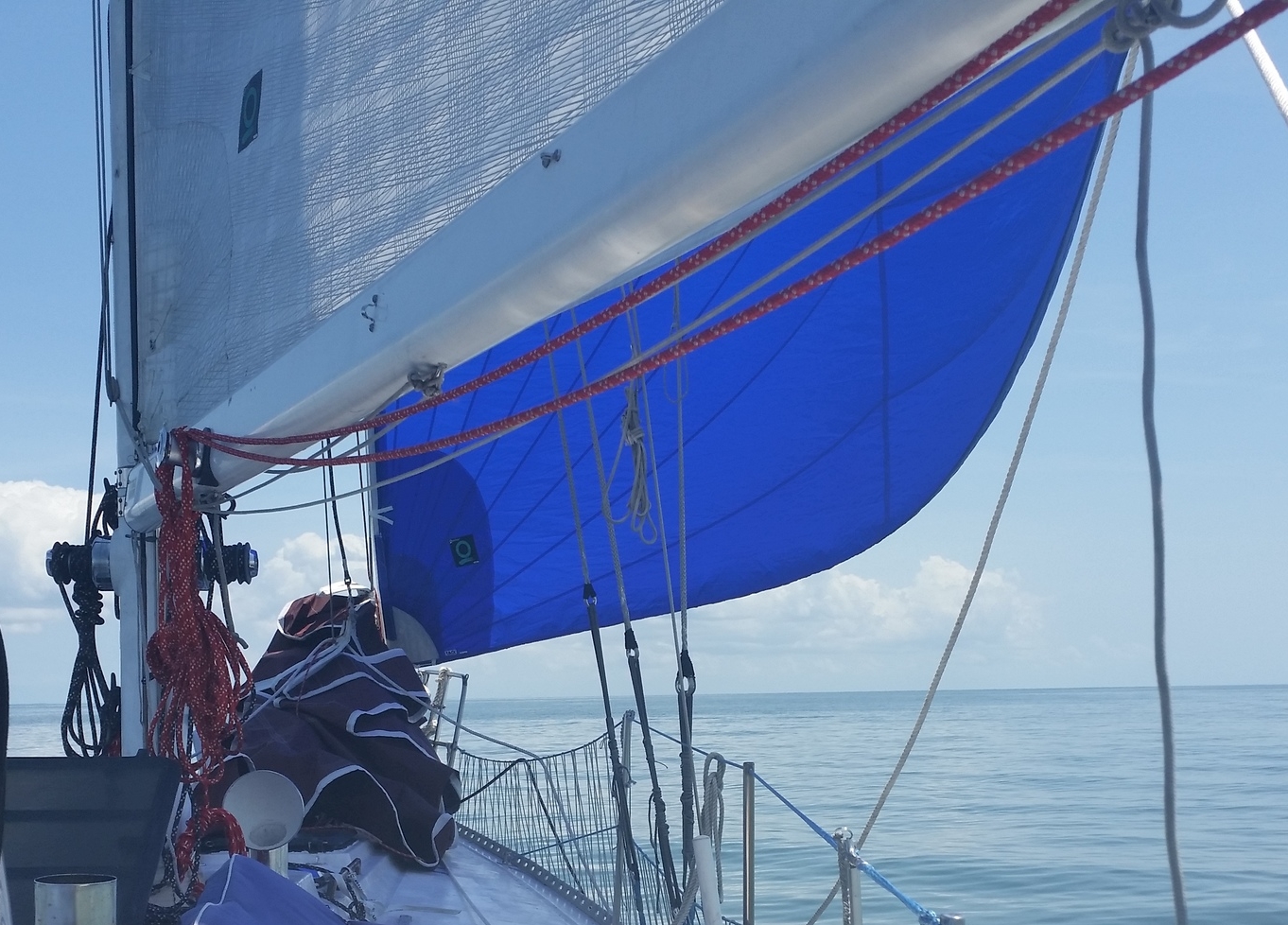When it comes to headsails, Roller Furling seems to dominate the scene. Almost every sailboat has a furled up sail wrapped around the headstay. We should take a look at the pros and cons of roller furling as compared to hank on.
Roller Furling Pros:
Easily deployed
Easily stored
Easily reefed by partially furling sail
Can be managed from cockpit
Roller Furling Cons:
Mechanical parts that can fail
Hard to furl in strong wind
Poor lead in angle due to furling extrusion
Sail makes headstay bulky when furled
Weight aloft
Hard to change headsails
Hard to inspect headstay
Hank On Pros:
Less mechanical parts
Easy to lower sail in strong wind (simply release the halyard)
Ideal sail shape (this is why race boats have hank on headsails)
Minimal windage when sail is lowered
Sail can be removed for strong storms to further reduce windage
Minimal weight aloft
Easy to change headsails
Hank On Cons:
Sail must be flaked and stowed when lowered
Limited number of reefs available to be put in
Not as easy or quick to deploy
You have to go forward to tend to the sail
You need to evaluate what you are looking for and what compromises you are willing to accept. As you can see, the both have pluses and minuses, it's just a matter of finding which you can live with.
On our Alberg 30 "Windpuff", we have a roller furling because we use this vessel for day sails and the ease of setting and stowing the sail can't be beat when doing short sails on the bay. Sail shape suffers a bit and we can't put up different sails, but it's easy!
On our Morgan 45 "Wisdom", we have hank on because we use this vessel for ocean sailing and long trips. We have two headsails that we run on the same stay, a jib and a drifter for light airs. If we had a roller furling, we would have needed to install another tack point to fly the drifter from since the jib would be furled up on the headstay.

In strong winds, we can always lower the sails by releasing the halyards, allowing us to reduce canvas in a hurry!
Having fewer moving parts also means less to go wrong or break. If a furling line breaks, the headsail will unfurl instantly. This tends to happen at the worst time. Also, in high winds, the loads on furling drums is also high, hence the need for bearings to aid in spinning. This all occurs at the bow where it is bathed in salt to expedite corrosion. The other problem with the furler wrapped around the headstay is that it is nearly impossible to inspect the headstay. You have to physically open the furler to get a look at the steel cable inside.
I did not like the thought of my mast being held up by a hidden piece of metal in a highly corrosive environment, so I weighed out the other points and decided to go with a hank on system with a synthetic headstay.
Dyneema can not rust, so the entire system is immune to the corrosive environment of the bow. The chafe sleeve installed over the headstay protects it from the hanks sliding over it and the ends of the stay, where the most wear occurs is doubly reinforced with service wrapped around the stays.
This system has given us the piece of mind to confidently sail out to sea for miles without ever worrying about mechanical failures.
What system do you prefer? Let me know in the comments down below!






